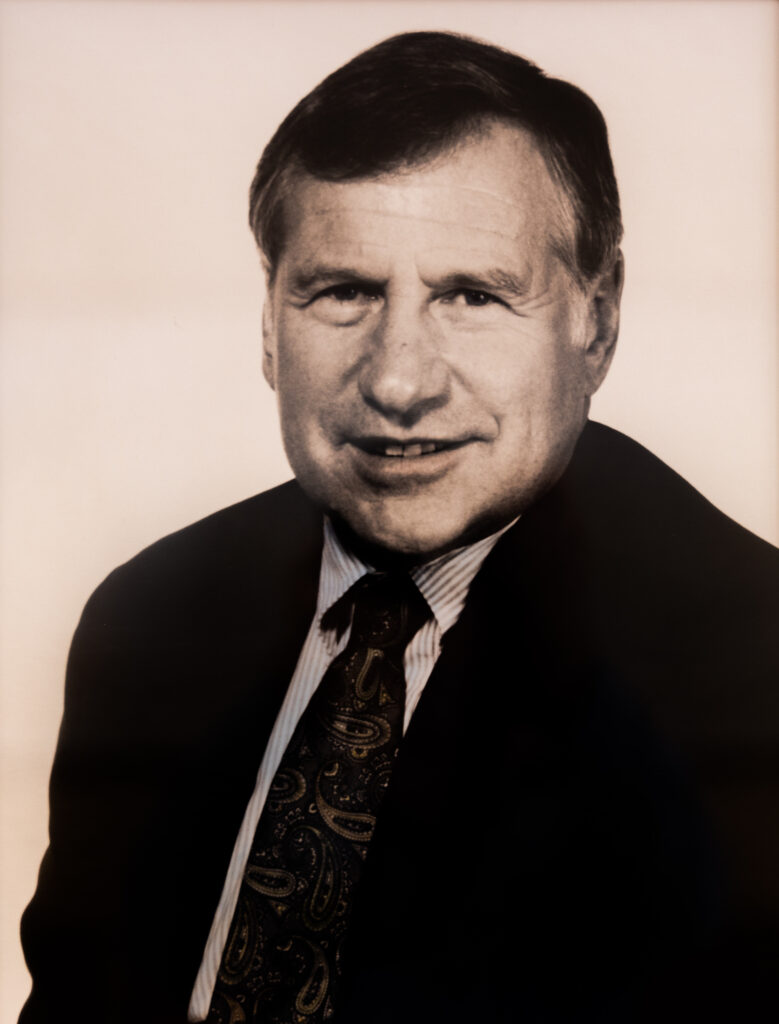The Legacy of James D. Bernstein: Part 1
“Don’t tell the community what they need.”
The Foundation for Health Leadership and Innovation’s (FHLI) founding director, James (Jim) D. Bernstein, was a rural health pioneer. Over his 35-year career, he championed community-driven care for low- and moderate-income, isolated, and underserved populations. As the founder of the first state office of rural health in the United States, Bernstein’s work has impacted communities nationwide. He believed:
- Everyone has a right to health care.
- Care should be respectful, effective, and efficient.
- Each health care system belongs to the communities where people live and providers practice.
Today, FHLI continues to work to ensure Bernstein’s legacy of innovation and community-driven approach to systems-level change endures. In this three-part blog series, you can learn about his experience and approach, the history of the North Carolina Office of Rural Health (NCORH), and the evolution of FHLI.

Peace Corps, U.S. Public Health Service, & Global Community Health Fellowship
Bernstein earned his BA in Political Economy and Sociology from Johns Hopkins University. Then, he served a two-year term with the third class of Peace Corps volunteers as a high school English and gym teacher in Morocco, where he also met and married his wife, Sue. When he returned, he earned his MA in Hospital Administration from the School of Public Health at the University of Michigan.
Upon completing graduate school, he entered the US Public Health Service and was awarded a Global Community Health Fellowship in 1969. His studies and experiences in the Peace Corps sparked a keen interest in working with rural communities.
Community-Based Rural Health Care in North Carolina
After serving as Administrator for the Sante Fe Indian Hospital and Service Unit Director for health facilities, a series of events led Bernstein to meet with Dr. Cecil Sheps, Director of the University of North Carolina at Chapel Hill (UNC) Health Services Research Center (for whom the UNC Sheps Center is now named).
Through this connection, Bernstein began his first community-based health project, building relationships in Walstonburg of Greene County. This rural, predominantly Black community had no doctor, and there was still KKK activity at the time. Yet, Bernstein earned the community’s trust and collaborated with the biracial community board to help drive solutions and decision-making.
The model they implemented, which was subsequently followed by the Office of Rural Health (ORH), involved a physician assistant, family nurse practitioner, or another trained provider supervised by a nearby physician who supplied clinical support and backup when needed. The community-based providers were trained to perform the essential functions of physicians so they could deliver health care to rural communities that had none.
Dr. Edgar Beddingfield, a past president of the North Carolina Medical Society, became the first physician to implement this approach. He supervised Donna Shafer, the first nurse practitioner to serve the Walstonburg community and a close friend of Bernstein and his wife, Sue. You can learn more in this dedication to Bernstein by Donald L. Madison, MD, published in the North Carolina Medicine Journal [PDF].

The First Office of Rural Health
UNC leaders pitched the idea of a statewide government program to help develop rural health clinics to the governor of North Carolina. In 1973, Bernstein established the North Carolina Office of Rural Health (NCORH), the first office of rural health in the country.
Bernstein faced many obstacles when getting the program off the ground. For it to work, he needed to advocate for policy change to enable providers to practice within the full scope of their training. He also needed enough buy-in from physicians and medical examiners, many of whom pushed back on the idea.
Even in those early days, Bernstein understood that community acceptance and investment were essential. One of his many gifts was his ability to connect with people across lines of difference. He developed strong, trusting relationships wherever he went—from the heart of rural communities to the halls of Congress.
In addition to his knack for building trust with community members, he had a keen ability to hire good people from a wide range of backgrounds dedicated to the cause. By collaborating closely with a hand-picked team dedicated to supporting and addressing the needs of rural and underserved communities across the state, he laid the foundation for creating local county health centers in North Carolina.
Working alongside rural community and health leaders, he helped establish a roadmap for designing and implementing innovative solutions to address even the most complex health challenges. According to those close to Bernstein, he saw challenges as opportunities for change.
Under his leadership, NCORH supported groups of local citizens in establishing nearly 85 rural-community-operated health centers in North Carolina. To do this, Bernstein and his team traveled to each community to listen and learn. They operated on a few fundamental principles:
- Act only upon request.
- Never tell the community what they need.
- Be present and listen.
If people wanted a health care center, they assembled the necessary resources, uplifted local leaders, and ensured community ownership during the design process and ongoing operations.
Bernstein Describes NCORH’s Philosophy & Approach
“We weren’t going to run anything… They, the community, would be primarily responsible, and we would provide the pieces that they couldn’t put together themselves, as well as the know-how to make it work.
Nor were we going to push ourselves or come out from Raleigh saying, ‘We’ve got this new idea for your community, and this is what you should do: You should have a health center; you should have a nurse practitioner; it should be run by the community…’ We acted only where we had a request.
We might get a call saying, ‘We haven’t had a doctor in a long time, and we’re interested in just talking to you.’ Then we’d send a staff person out. So that was another principle: Don’t tell the community what they need. If they don’t want what we have, that’s fine. The next thing was to be able to put together all the pieces that were needed to do the job.
So, if a community wanted to do it, we had the ability to make it happen. And the most important part of that was our field staff… the people who interfaced with community folks. Our philosophy was, we go to them.”

Today, NCORH provides funding, training, and technical assistance to improve the quality, accessibility, and cost-effectiveness of health care in rural and underserved communities.
In part two of this series, we will examine NCORH’s personal impact on rural health providers and how Bernstein acted as a mentor for rural health leaders across the country.
